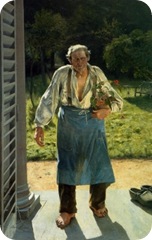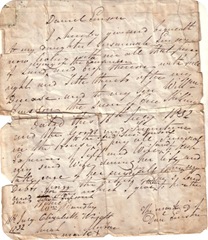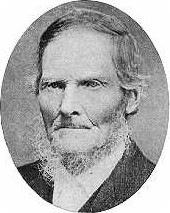 My maternal grandfather was the last living farmer by profession in my lineage. We’ve ‘advanced’ since then and make our living using the technology of today.
My maternal grandfather was the last living farmer by profession in my lineage. We’ve ‘advanced’ since then and make our living using the technology of today.
My paternal grandmother was a farmer too, with 200 acres of fruit trees, hay and vegetables. Cash was always a problem, but there was always food on the table, even if it was plain fare at times.
Of course my siblings and I have gardens and small orchards at our homes, but they are considerably smaller than the acres of ground that grandma and grandpa planted to feed and support their families.
Grandpa grew Utah celery, sugar beets and potatoes as cash crops. Grandma grew varieties of apples, berries and other basic food varieties.
At our home, we grow apples, pears and have a raised box gardens. The apples produce a far larger harvest than our family, kids and grandchildren can use, so we give the surplus to other families in our area who are in need, or love fresh fruit and are smart enough to bottle their own fruit each year.
Ancestors a generation or two farther back in time basically grew the same crops although they did grow a few varieties that we don’t see very often today.
Our Redwood City Seed Company catalog came last week. I found some of the ‘lost’ varieties while perusing its pages. We are going to plant some of them this year to enjoy and possibly add to our annual planting list.
 From my Calaveras County California grandparents garden: Miner’s Lettuce. One-foot tall California native succulent whose leaves are used in salads. Great grandpa was a gold rush miner and enjoyed eating the fresh ingredient of these leaves during that period and later in life.
From my Calaveras County California grandparents garden: Miner’s Lettuce. One-foot tall California native succulent whose leaves are used in salads. Great grandpa was a gold rush miner and enjoyed eating the fresh ingredient of these leaves during that period and later in life.
From my New Zealand ancestors garden: New Zealand Spinach. Introduced in N.Z. by Europeans in 1770, the leaves of the plant are eaten like spinach. The catalog says the taste is mild and full of flavor.
From my father: Horseradish: My father always made his own horseradish sauce. it wasn’t the watered down, tamed stuff you buy at stores today. It had BITE. In fact, I remember getting an instant bloody nose when I curiously took a deep whiff of a newly opened bottle when I was a wee young man. Even Kerr jar lids and rings were corroded by this rattle snake venom, but Dad loved it. I learned to just wave my knife over an opened jar a few times and spread the smell on my roast beef as a kid. My taste buds have largely died off as I’ve aged, so I like the store bought stuff today. I don’t think I could take the horseradish that Dad ate though – not even the variety that he diluted with ground turnips. I guess I never grew up to be the man he was. Maybe this year.
From my paternal ancestors: I don’t know which ones but my father told my stories of them loving the large varieties of Lima Beans. He loved them. I like them. My wife hates them. We are going to grow a few bushes of the Incan Giant White Lima Beans this year. 1” long in the pod. 2” long when cooked.
Of course, we’ll continue to grow many heirloom varieties of vegetables and fruits this year and save the seeds for next years crop. Hybrid varieties don’t produce fruit well in future generations of their seeds, so growing varieties from proven heirloom seeds is just smart planning. We might as well live in the ‘prepared’ mode rather than having to learn it in an emergency and not having the skills and the right seeds. The seeds harvested from last years plants will be used this year and the new varieties will be added to the annual seed storage rotation cache if we like them.
 We won’t grow parsnips this year. I’m the only one who likes them. We won’t grow watercress either, with no running water to support these wonderful peppery plants. We’ve substituted nasturtium leaves for water cress in our salads, but they don’t make a good sandwich like the cress does.
We won’t grow parsnips this year. I’m the only one who likes them. We won’t grow watercress either, with no running water to support these wonderful peppery plants. We’ve substituted nasturtium leaves for water cress in our salads, but they don’t make a good sandwich like the cress does.
Five gallon buckets with the bottom knocked out will be home to some of the vining tomatoes. They’ll be full of compost, nested in 12” of garden soil and placed adjacent to tall trellises to support the 6 –12 ft high vines. If you don’t have a garden, everyone can grow cherry tomatoes at home using pots.
Today, our gardens are relatively easy to grow compared to those of our ancestors. We have to rediscover some of the varieties and methods they used but the effort is well worth it. Nothing tastes as good as produce that you’ve grown yourself, even if it was grown in a flower pot on the porch.
Spring will be here before we know it. If you haven’t ordered your seed catalogs yet, do it now. When they arrive, you’ll find yourself reading them and envisioning warm weather and vine ripened tomatoes. The cold and white outside will vanish from view for a few minutes.
Here are a few catalogs that include heirloom varieties:
The Redwood Seed Company http://www.ecoseeds.com
Johnny's Selected Seeds http://www.johnnyseeds.com
Heirloom Seeds http://www.heirloomseeds.com
Baker Creek Heirloom Seeds http://rareseeds.com
Amishland Heirloom Seeds http://www.amishlandseeds.com
Territorial Seeds http://www.territorialseed.com
 Browsing directly to that collection, success was almost immediate. That was easy! While there, why not refine my search and search for the rest of my ancestors who were born in New Hampshire too? That’s when the ‘week’ started. Success, success, success, mixed with some failures.
Browsing directly to that collection, success was almost immediate. That was easy! While there, why not refine my search and search for the rest of my ancestors who were born in New Hampshire too? That’s when the ‘week’ started. Success, success, success, mixed with some failures. Thomas Ashton
Thomas Ashton












